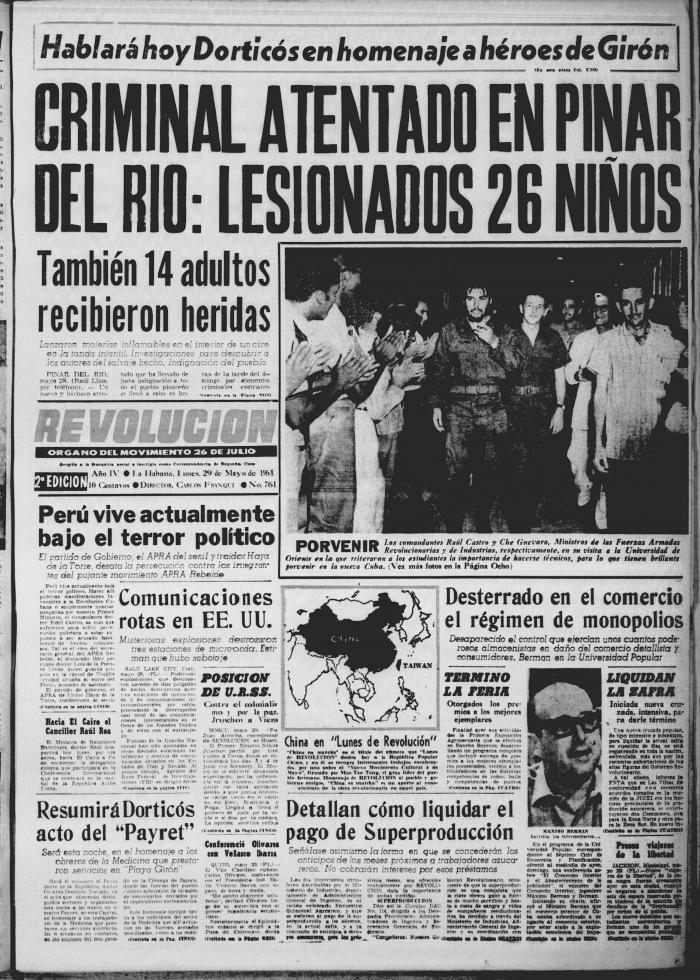It was Sunday, at the stroke of two o'clock in the afternoon. The Riesgo movie theater was full of children and one of those documentaries that used to precede movies was being shown, when suddenly fire invaded the screen.
Rolando Pacheco Rodríguez was only eight years old, but he remembers it “as if it had just happened.
“We sat on the second floor, because we couldn't get seats on the first floor, and the third floor was full as well”.
It was May 28, 1961, and criminal hands, in the service of the U.S. Central Intelligence Agency (CIA), had set fire to the movie theater in the middle of a children's matinee.
Trying to get him out, in the midst of the terrified crowd that rushed to the doors to flee from danger, Rolando remembers that his father seriously cut his arm on the glass.
Even so, they were not among the worst off. Other children suffered more serious injuries, such as Enrique Henríquez Hernández, 11 years old, who fell trying to reach the hallway, and several people ran over him, causing a partial collapse of his thorax.
His parents would tell him, sometime later, that when they arrived at the Casa de Socorro, they passed him several times by the side without recognizing him, because he was so bruised.
The result of that monstrous event would be 26 children and 14 adults injured, some with lifelong consequences, such as Alberto Noel Venereo González, who died years later, due to an aneurysm caused by the blows he received to his head.
Witnesses of that day assure that neither the Casa de Socorros de Pinar del Río nor the León Cuervo Rubio Hospital had ever received so many people to donate blood or help in whatever was needed, as on that terrible Sunday that shook the city.
This is how the people of Vueltabajo reacted to one of the most savage events in recent memory.
“It was a terrorist act, without measuring the consequences it could have had,” Rolando said, and he confessed that for years he would be afraid to be anywhere where there was a concentration of people.
“That trauma lasted a long time for me, and for other children and their parents as well”.
The Insurrectional Movement for Revolutionary Recovery, a paramilitary organization founded in the United States, with a string of acts against our country, claimed responsibility for the action, in which they used live phosphorus supplied by the CIA.
Historian Juan Carlos Rodríguez Díaz explained to Granma that it was an expression of resentment and impotence due to the crushing defeat they had suffered in Playa Girón, a little more than a month before, and a ruthless and cowardly act of cruelty against the civilian population.
More than six decades after the fire jumped from the screen of the Riesgo movie theater (today Pedro Saidén) and turned a cartoon session into a scene of horror, Pinar del Río does not forget nor does it understand that the country from which the sabotage was ordered insists on keeping Cuba on a list of nations that sponsor terrorism.
For Rolando, this is an enormous irony. “Since 1959 we Cubans have been repeatedly targeted by terrorist actions forged in the United States, which on a day like today went to the extreme of setting fire to a crowded movie theater during a children's show,” he says. “So if anyone should be on that list, it's them. The film is the other way around.”
















